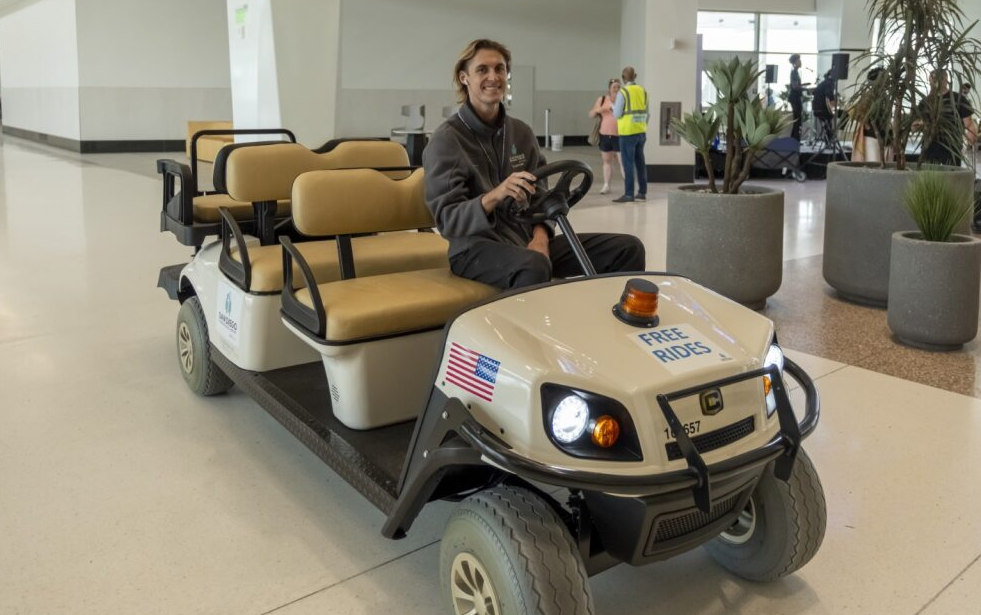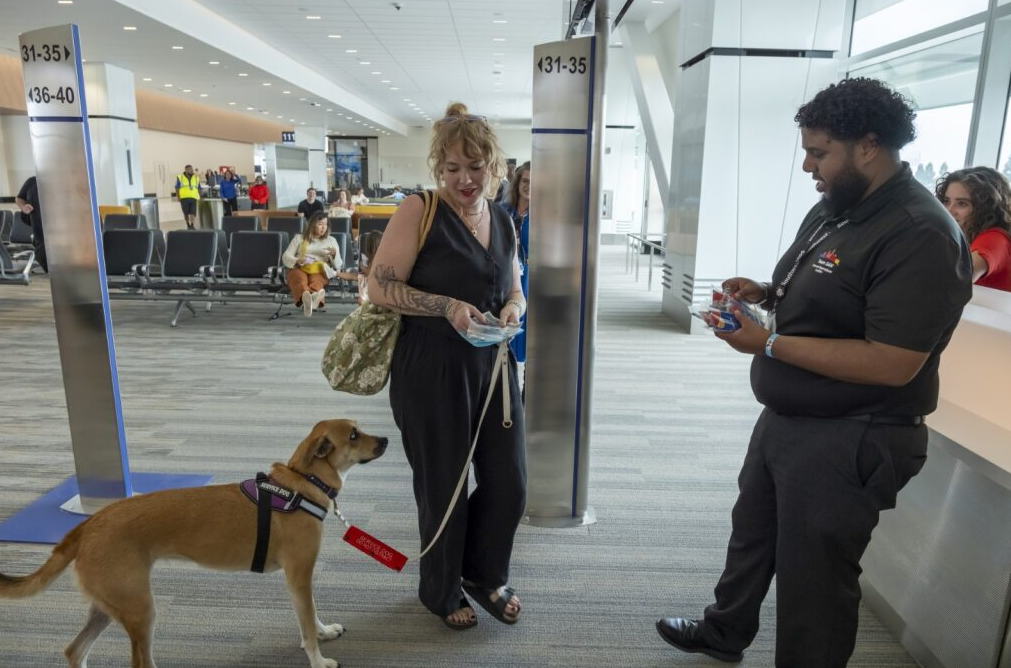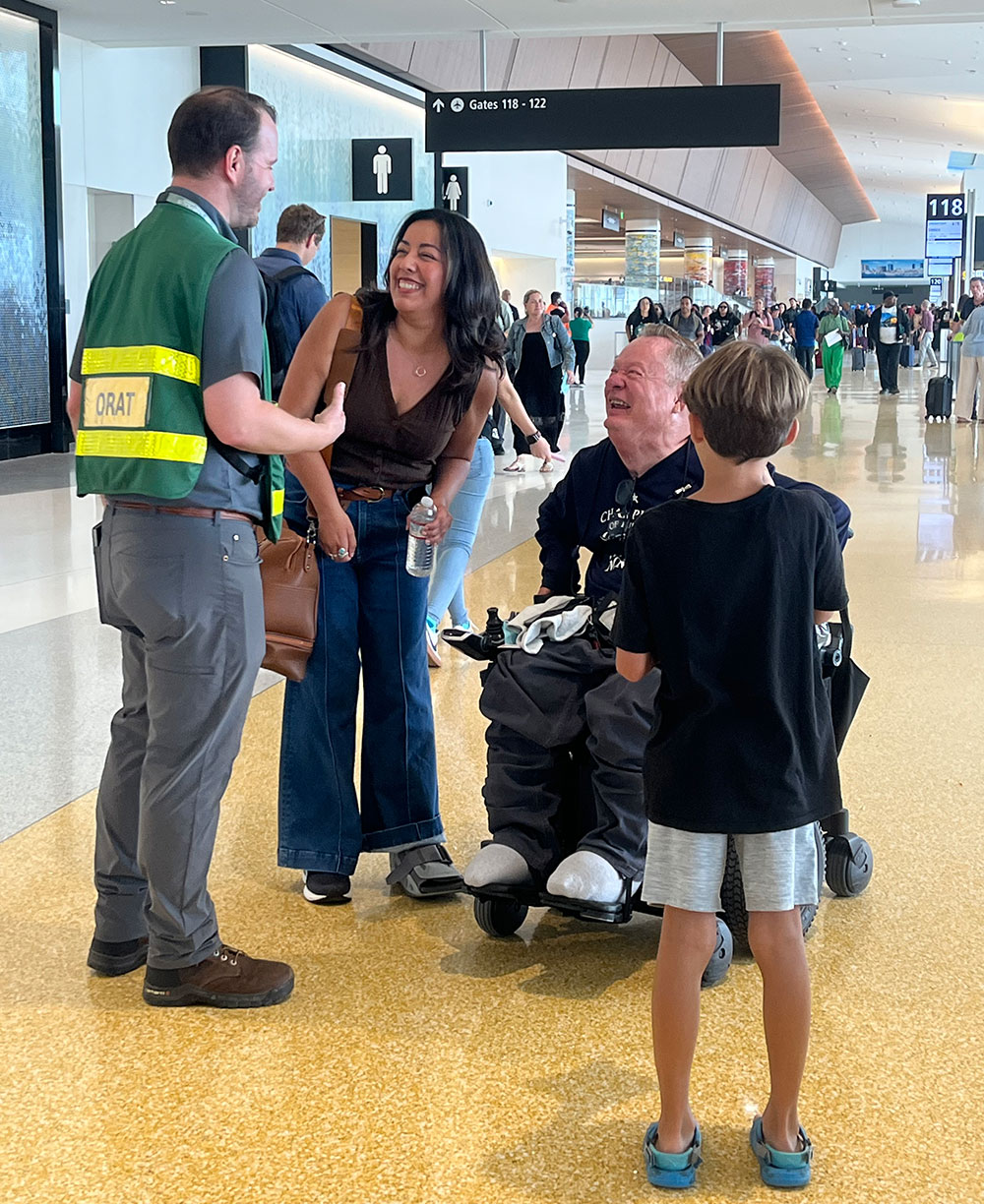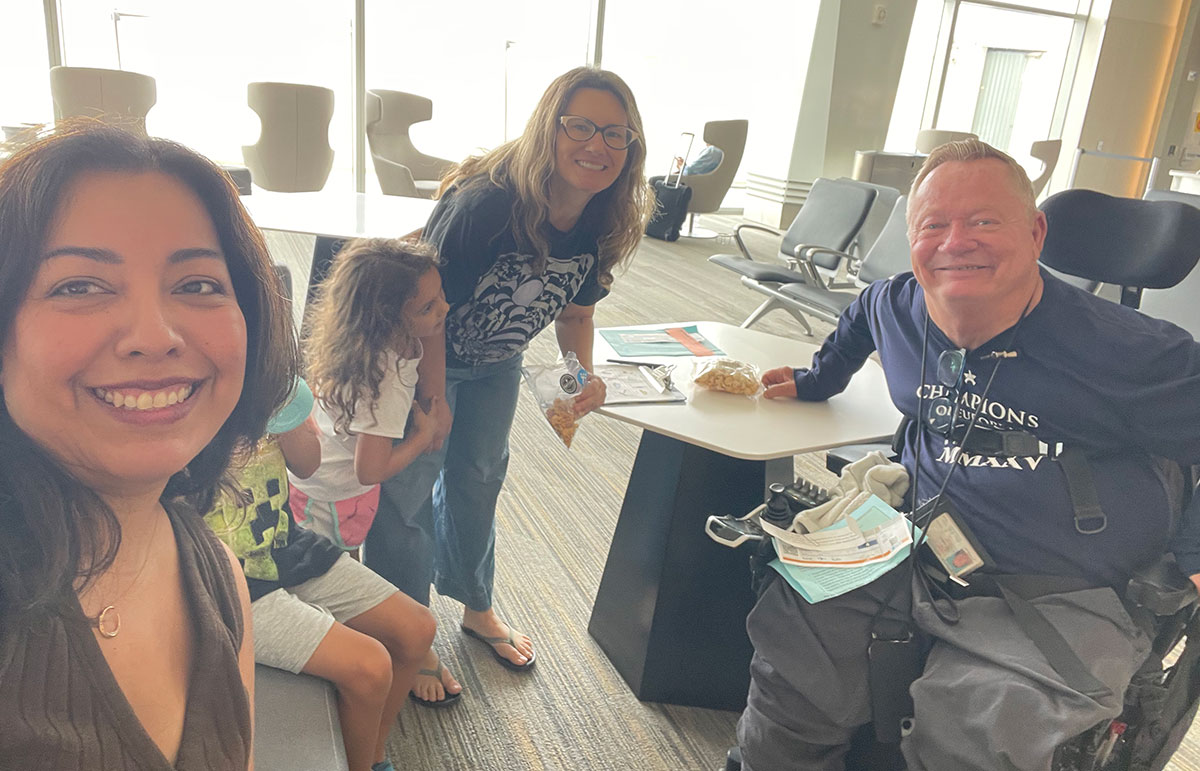 On Sunday, September 14, more than 1,000 community members volunteered to test the
New Terminal 1 (NT1) in a live passenger “dress rehearsal” simulation. Participants
received mock itineraries and experienced the full “curb-to-gate” journey, including
checking in, clearing security, dining at concessions, locating gates, and claiming
baggage. Among them were dozens of disabled travelers whose participation ensured
that feedback reflected a wide range of lived experiences and access needs.
On Sunday, September 14, more than 1,000 community members volunteered to test the
New Terminal 1 (NT1) in a live passenger “dress rehearsal” simulation. Participants
received mock itineraries and experienced the full “curb-to-gate” journey, including
checking in, clearing security, dining at concessions, locating gates, and claiming
baggage. Among them were dozens of disabled travelers whose participation ensured
that feedback reflected a wide range of lived experiences and access needs.
Thanks in part to the Airport Authority’s partnership with DSPS, disabled community members were engaged and represented in meaningful ways. Sixteen registrants identified the need for a wheelchair, eight reported mobility challenges, twelve noted other accommodation requests such as traveling with a service animal or needing assistance with anxiety, and two identified as Deaf or hard of hearing. Their insights proved invaluable, helping the Airport Authority fine-tune accessibility features ahead of the official NT1 grand opening on September 23.
A Growing Relationship
 This event reflects a growing relationship between DSPS and the Airport Authority.
Last year, DSPS provided a customized “Disability Aware” training to volunteer airport
staff, equipping them with best practices for interacting with disabled travelers.
That training laid the groundwork for creating a more welcoming, inclusive airport
environment, and the NT1 simulation demonstrated those principles in action.
This event reflects a growing relationship between DSPS and the Airport Authority.
Last year, DSPS provided a customized “Disability Aware” training to volunteer airport
staff, equipping them with best practices for interacting with disabled travelers.
That training laid the groundwork for creating a more welcoming, inclusive airport
environment, and the NT1 simulation demonstrated those principles in action.
“Community partnerships like this keep accessibility and inclusion a priority, not just in the classroom but in everyday life,” said Jamila DeCarli, WorkAbility III Coordinator. “When employers and institutions invite disabled people to join the planning and design process, everyone benefits from better service, stronger culture, and more equitable access.
Why It Matters
NDEAM is a time to highlight the critical contributions of disabled people in the workforce and to advance efforts that remove barriers to employment. Events like the NT1 simulation remind us that accessibility is the key to full participation in travel, work, and community life.
For DSPS, fostering these real-world partnerships is core to its mission. By connecting with employers and civic institutions like the Airport Authority, DSPS ensures that disabled students gain not only classroom support but also pathways into inclusive workplaces where their skills are valued and their access needs are supported.
Explore DSPS Workforce Programs
 Whether you are a prospective student exploring your career path or an employer seeking
to recruit and retain qualified talent, improve company culture, or strengthen customer
service, DSPS offers three workforce programs that bridge education and employment:
Whether you are a prospective student exploring your career path or an employer seeking
to recruit and retain qualified talent, improve company culture, or strengthen customer
service, DSPS offers three workforce programs that bridge education and employment:
- WorkAbility III: Career placement and retention support for individuals with disabilities, in partnership with the Department of Rehabilitation.
- College 2 Career (C2C): A three-year program that helps students with Autism and/or intellectual disabilities transition from college to meaningful employment.
- Career Support Pathways (CSP): A comprehensive network of employment services, from customized employment to family involvement in the rehabilitation process.
To learn more about how you can get involved, visit DSPS Workforce Programs.
